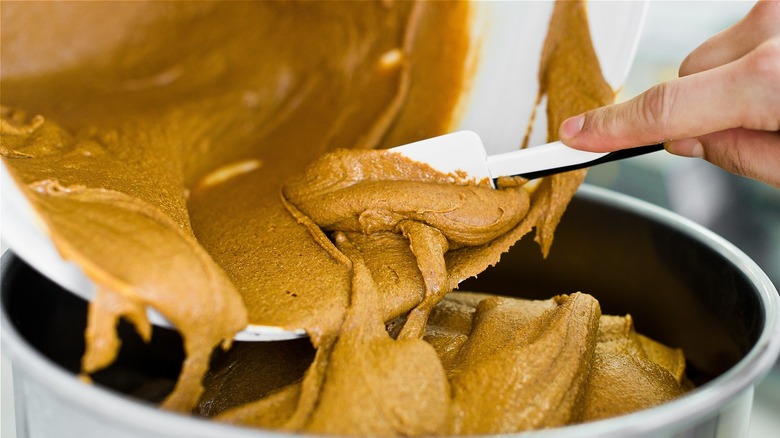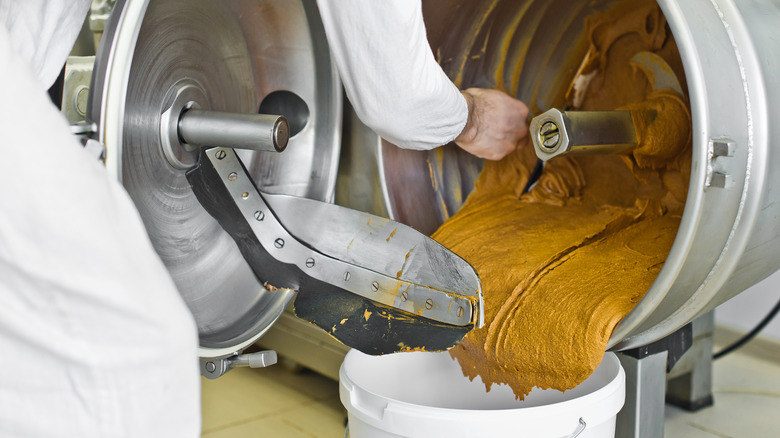Seeing How Peanut Butter Is Made Is Oh-So-Satisfying
There's something about a smooth process that really satisfies the soul. Watching many parts unite to all come together to make one amazing thing can be addicting. For some viewers, the rhythmic pace and aesthetic appeal make videos showing these processes immensely soothing – possibly even better than images of baby animals.
Large-batch peanut butter-making videos are a case in point. While the ingredients involved are minimal, the steps required provide an opportunity for some truly cathartic viewing. We start with a virtual ocean of peanuts, vast quantities of peanuts laid out symmetrically — a sea pebbled with little legumes. The peanuts are waved through from one machine to the next in a never-ending rainfall of nuts. Those little nuggets of goodness get roasted en masse, marching through the process like tiny oval soldiers, acquiring a burnished golden hue. Roasting increases the temperature of the nuts and brings the oils to the surface, so they need to cool off a bit before moving on, to keep them from losing too much of their natural oils. The fan treatment lowers their temperature a bit. Next, the peanuts shed their skins in the blanching process, removing their outer layers, but leaving the best portions of the peanut intact.
A smooth process
The purified, golden peanuts are then sucked into a stainless steel vat, which sends them into the grinding phase, where they are churned to nut-buttery perfection. After being tested and perfected for color and consistency, additional ingredients are incorporated (which usually include salt, sugar, and hydrogenated vegetable oil to keep the peanut butter from separating). In large plants, a machine resembling a soft-serve ice cream dispenser then pours the spread evenly and compactly into jars. The fresh peanut butter is now ready to be labeled and sold. Seeing it in action is truly a sight to behold.
The process is consistent, though not identical, across manufacturers. Some plants remove part of the peanut's center as well as the skins, since the peanut's heart tends to be somewhat more bitter than the rest (it's almost like it already knows it's about to be crushed). While most manufacturers do the grinding in two steps, it varies since some brands (like individuals) want to ensure a smoother consistency, while others prefer a chunkier texture. Natural-style peanut butters typically skip the salt, sugar, and additives — but everyone starts with roasted nuts since they're so much tastier than raw. Of course, you can always make peanut butter at home and skip the lengthy process. Best yet: for multi-sensory satisfaction, you can make your own while watching how it's done over at the factory.

